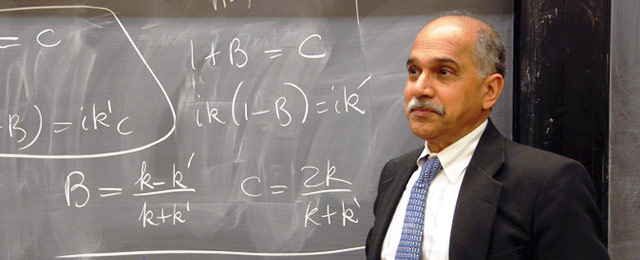Online courses directory (273)
Things in our universe can be unimaginably large and small. In this topic, we'll try to imagine the unimaginable!. Scale of the Large. Scale of the Small. Introduction to Light. Four Fundamental Forces. Scale of Earth and Sun. Scale of Solar System. Scale of Distance to Closest Stars. Scale of the Galaxy. Intergalactic Scale. Hubble Image of Galaxies. Cosmological Time Scale 1. Cosmological Time Scale 2. Big Bang Introduction. Radius of Observable Universe. (Correction) Radius of Observable Universe. Red Shift. Cosmic Background Radiation. Cosmic Background Radiation 2. Hubble's Law. A Universe Smaller than the Observable. Scale of the Large. Scale of the Small. Introduction to Light. Four Fundamental Forces. Scale of Earth and Sun. Scale of Solar System. Scale of Distance to Closest Stars. Scale of the Galaxy. Intergalactic Scale. Hubble Image of Galaxies. Cosmological Time Scale 1. Cosmological Time Scale 2. Big Bang Introduction. Radius of Observable Universe. (Correction) Radius of Observable Universe. Red Shift. Cosmic Background Radiation. Cosmic Background Radiation 2. Hubble's Law. A Universe Smaller than the Observable.
Watch fun, educational videos on all sorts of Physics questions. Bridge Design and Destruction! (part 1). Bridge Design (and Destruction!) Part 2. Shifts in Equilibrium. The Marangoni Effect: How to make a soap propelled boat!. The Invention of the Battery. The Forces on an Airplane. Bouncing Droplets: Superhydrophobic and Superhydrophilic Surfaces. A Crash Course on Indoor Flying Robots.
Work and energy. Potential energy. Kinetic energy. Mechanical advantage. Springs and Hooke's law. Introduction to work and energy. Work and Energy (part 2). Conservation of Energy. Work/Energy problem with Friction. Introduction to mechanical advantage. Mechanical Advantage (part 2). Mechanical Advantage (part 3). Intro to springs and Hooke's Law. Potential energy stored in a spring. Spring potential energy example (mistake in math). Introduction to work and energy. Work and Energy (part 2). Conservation of Energy. Work/Energy problem with Friction. Introduction to mechanical advantage. Mechanical Advantage (part 2). Mechanical Advantage (part 3). Intro to springs and Hooke's Law. Potential energy stored in a spring. Spring potential energy example (mistake in math).
The course will provide an overview of the knowledge acquired during the past 20 years in the domain of exoplanets. It will review the different detection methods, their limitations, and the information provided on the orbital system and the planet itself, and how this information is helping our understanding of planet formation.
Using publicly available data from NASA of actual satellite observations of astronomical x-ray sources, we explore some of the mysteries of the cosmos, including neutron stars, black holes, quasars and supernovae.
Watch fun, educational videos on all sorts of Physics questions. Thomas Young's Double Slit Experiment. Newton's Prism Experiment. Bridge Design and Destruction! (part 1). Bridge Design (and Destruction!) Part 2. Shifts in Equilibrium. The Marangoni Effect: How to make a soap propelled boat!. The Invention of the Battery. The Forces on an Airplane. Bouncing Droplets: Superhydrophobic and Superhydrophilic Surfaces. A Crash Course on Indoor Flying Robots. Heat Transfer. Thomas Young's Double Slit Experiment. Newton's Prism Experiment. Bridge Design and Destruction! (part 1). Bridge Design (and Destruction!) Part 2. Shifts in Equilibrium. The Marangoni Effect: How to make a soap propelled boat!. The Invention of the Battery. The Forces on an Airplane. Bouncing Droplets: Superhydrophobic and Superhydrophilic Surfaces. A Crash Course on Indoor Flying Robots. Heat Transfer.
Watch fun, educational videos on all sorts of Materials, how they're created and what they can do. Whats all the matter? Atoms and Molecules. What is Soap?. Flocculation: Making Clean Water. Manufacturing Processes: Hands On to Hands Off. Whats all the matter? Atoms and Molecules. What is Soap?. Flocculation: Making Clean Water. Manufacturing Processes: Hands On to Hands Off.
Everything in the universe can be measured. Under Pressure. Earth's Tilt 1: The Reason for the Seasons. Earth's Tilt 2: Land of the Midnight Sun. 2D Equilibrium -- Balancing Games. Under Pressure. Earth's Tilt 1: The Reason for the Seasons. Earth's Tilt 2: Land of the Midnight Sun. 2D Equilibrium -- Balancing Games.
This is a 12 week course, currently scheduled to start on Monday, April 14, 2014 and finishing on Friday, July 11. This introductory physics course is intended for physical science majors and others desiring a rigorous introduction to physics. It closely parallels the brick-and-mortar course given to the freshmen at the University of Colorado at Boulder. The course covers classical mechanics, including kinematics, dynamics, conservation laws, and applications.
The Origins course tracks the origin of all things – from the Big Bang to the origin of the Solar System and the Earth. The course follows the evolution of life on our planet through deep geological time to present life forms.
An introduction to modern astronomy's most important questions. The four sections of the course are Planets and Life in The Universe; The Life of Stars; Galaxies and Their Environments; The History of The Universe.
This is a continuation of Fundamentals of Physics, I (PHYS 200), the introductory course on the principles and methods of physics for students who have good preparation in physics and mathematics. This course covers electricity, magnetism, optics and quantum mechanics.
This course introduces the various aspects of present and future Air Traffic Control systems. Among the topics in the present system that we will discuss are the systems-analysis approach to problems of capacity and safety, surveillance, including the National Airspace System and Automated Terminal Radar Systems, navigation subsystem technology, aircraft guidance and control, communications, collision avoidance systems and sequencing and spacing in terminal areas. The class will then talk about future directions and development and have a critical discussion of past proposals and of probable future problem areas.
This course will cover various topics on the discoveries about how the Universe evolved in 13.7 billion years since the Big Bang.
This introductory physical chemistry course examines the connections between molecular properties and the behavior of macroscopic chemical systems.
This free online tutorial reviews motion, electric fields, spectra, energy transfers, force, acceleration, gravity Newton's Laws, projectiles, light, and much, much more. This comprehensive grounding in Physics is ideal as a complement to regular classes, as a study and revision aid, and as a resource for someone pursuing an interest in basic science.
This course provides a thorough introduction to the principles and methods of physics for students who have good preparation in physics and mathematics. Emphasis is placed on problem solving and quantitative reasoning. This course covers Newtonian mechanics, special relativity, gravitation, thermodynamics, and waves.
This course provides a thorough introduction to the principles and methods of physics for students who have good prepara
General introduction to systems engineering using both the classical V-model and the new Meta approach. Topics include stakeholder analysis, requirements definition, system architecture and concept generation, trade-space exploration and concept selection, design definition and optimization, system integration and interface management, system safety, verification and validation, and commissioning and operations. Discusses the trade-offs between performance, lifecycle cost and system operability. Readings based on systems engineering standards and papers. Students apply the concepts of systems engineering to a cyber-electro-mechanical system, which is subsequently entered into a design competition.
Students will prepare a PDR (Preliminary Design Review)-level design intended for the Cansat Competition.This year's class will be taught in the form of a Small-Private-Online-Course (SPOC) and offered simultaneously to students at MIT under number 16.842 and Ecole Polytechnique Fédérale de Lausanne (EPFL) as ENG-421.
This short course provides an introduction to reactor dynamics including subcritical multiplication, critical operation in absence of thermal feedback effects and effects of Xenon, fuel and moderator temperature, etc. Topics include the derivation of point kinetics and dynamic period equations; techniques for reactor control including signal validation, supervisory algorithms, model-based trajectory tracking, and rule-based control; and an overview of light-water reactor startup. Lectures and demonstrations employ computer simulation and the use of the MIT Research Reactor.
This course is offered during the Independent Activities Period (IAP), which is a special 4-week term at MIT that runs from the first week of January until the end of the month.
Trusted paper writing service WriteMyPaper.Today will write the papers of any difficulty.






















